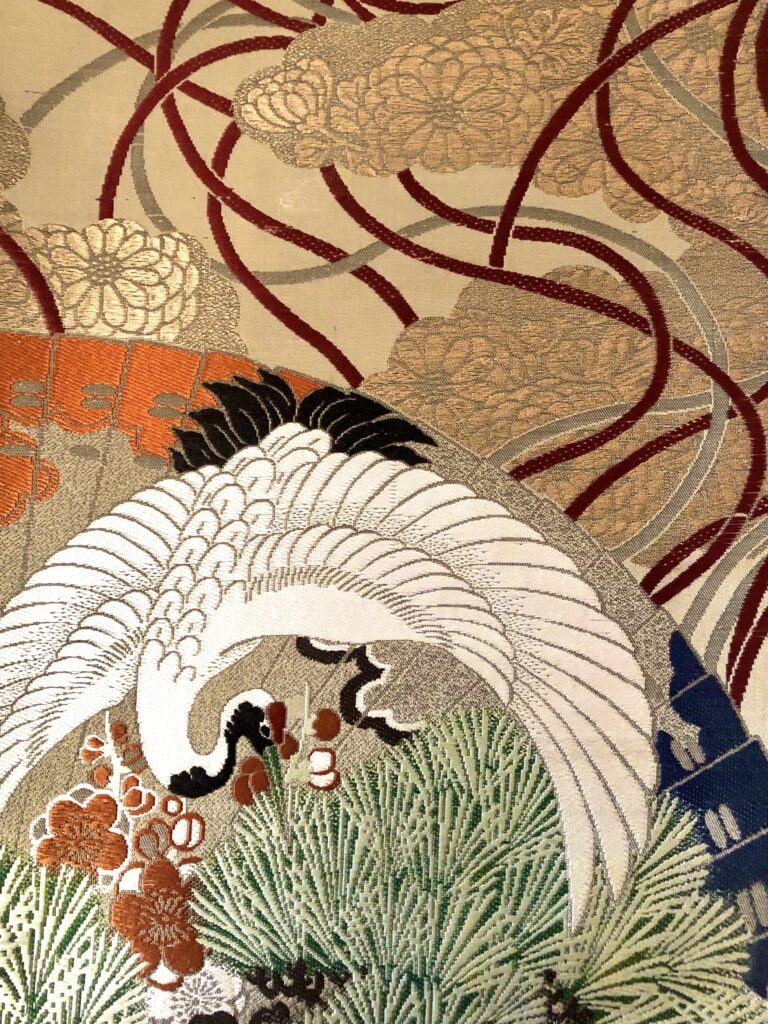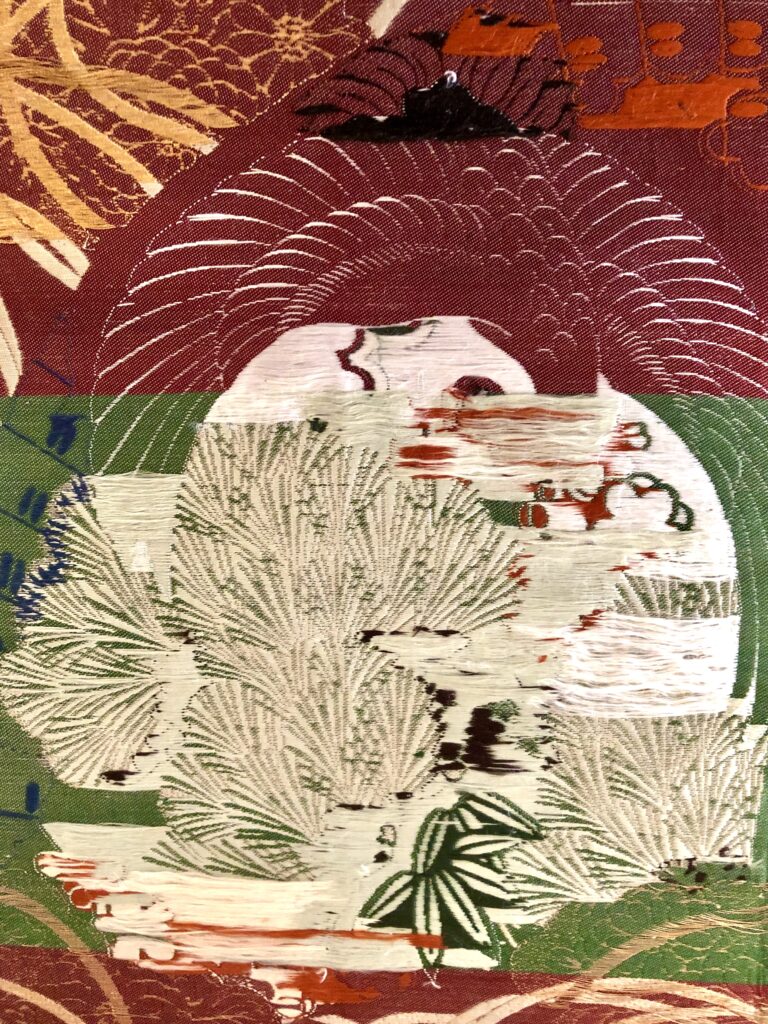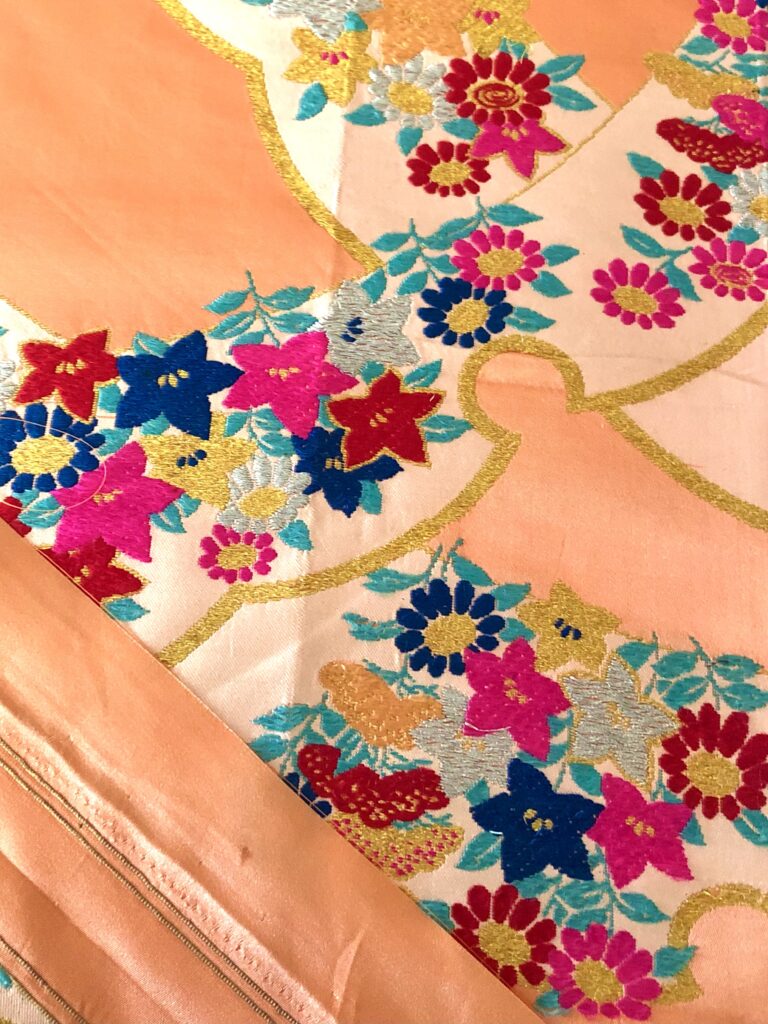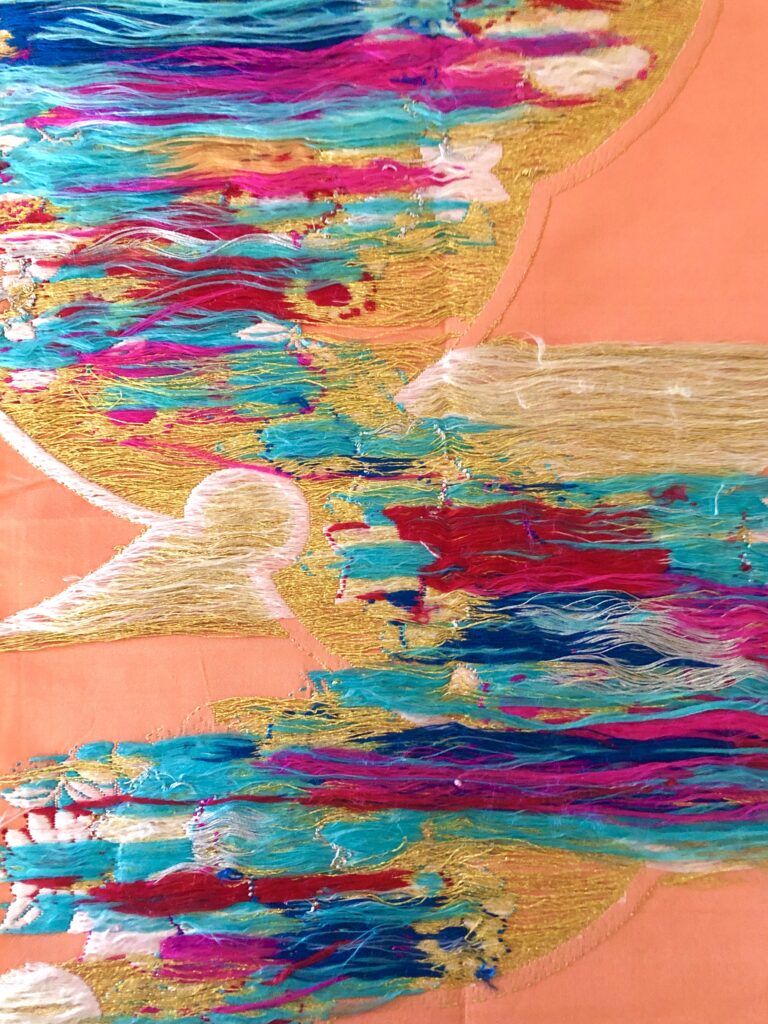Front and back.
Every item has the perfect textile to be used. We have to figure out the best match.
Of course it is amazing if we can create anything from our favorite fabric or textile. However, the truth is, we have to give up some kimono or obi since they're sometimes really worn out and can't last any reform. No wonder, they survived 100 years or longer.
I can't help but think about the days in that time when the kimono have lived. It reminds me that upcycling is not just about reform but recreate the value of Japanese culture.
Cutting obi and preserving embroidery is really a hard work. But it pays off when we finish the work.
Finest front. Skillful back.
Our work starts with loosening the stitches. We carefully choose the appropriate liner according the thickness of vintage obi.


Beautiful obi for the best day.
This obi with gorgeous embroidery was worn by a young woman at New Years ceremony in Showa period. The colorful flower patten on the orange fabric is beautiful and was the trend in that days.
You can see the stitch on back. It is a subtle craftsmanship.


How this obi is going to be changed, I will show you in my next post soon.
